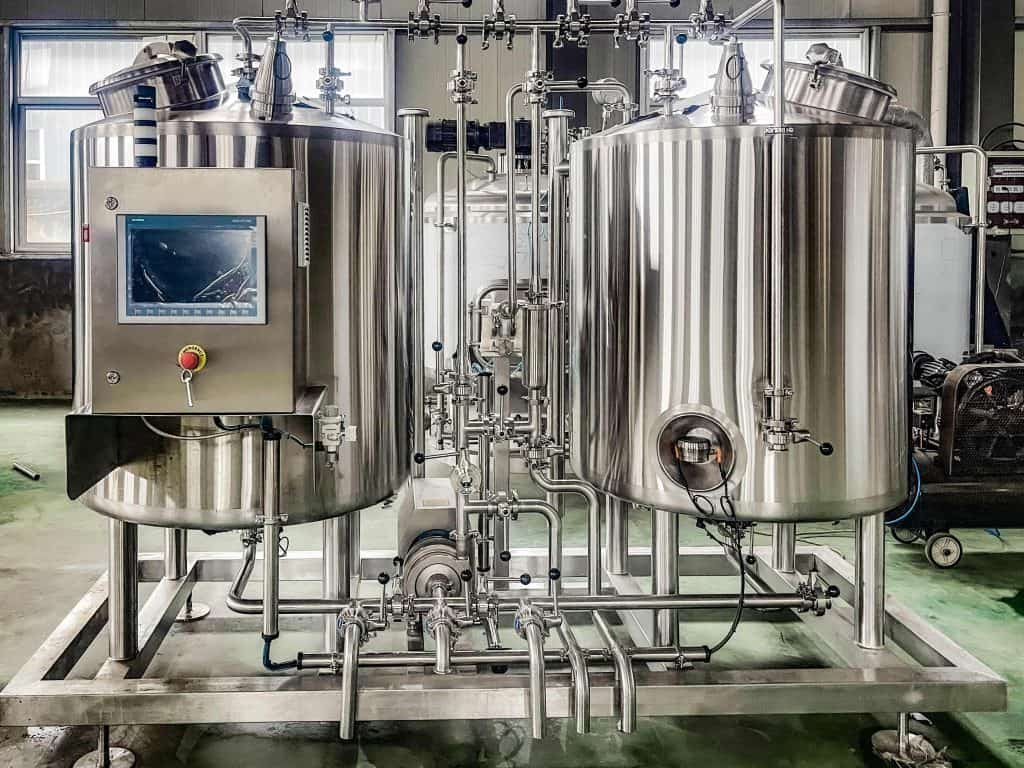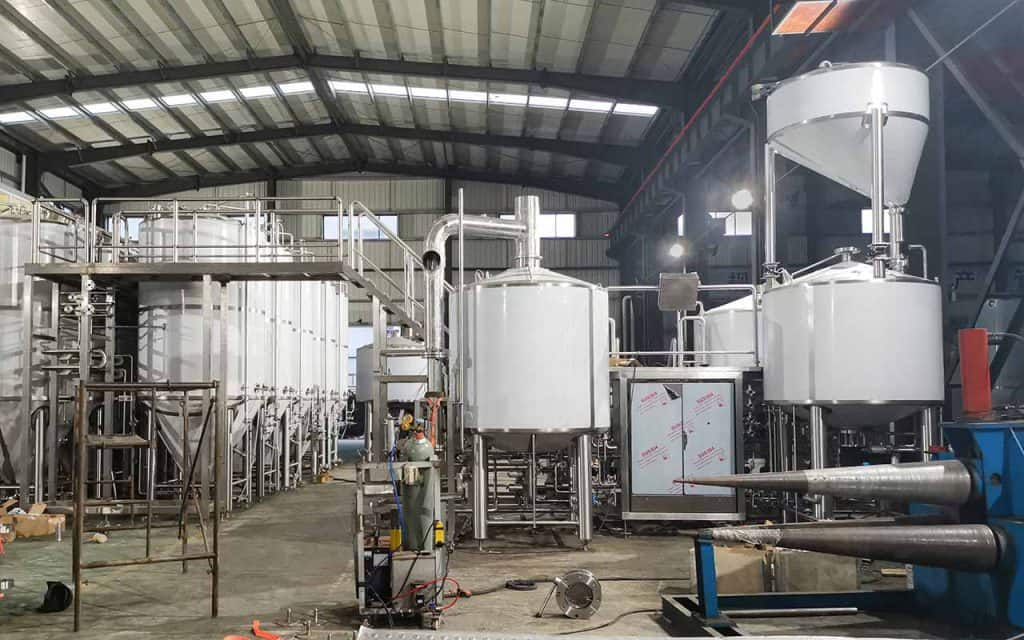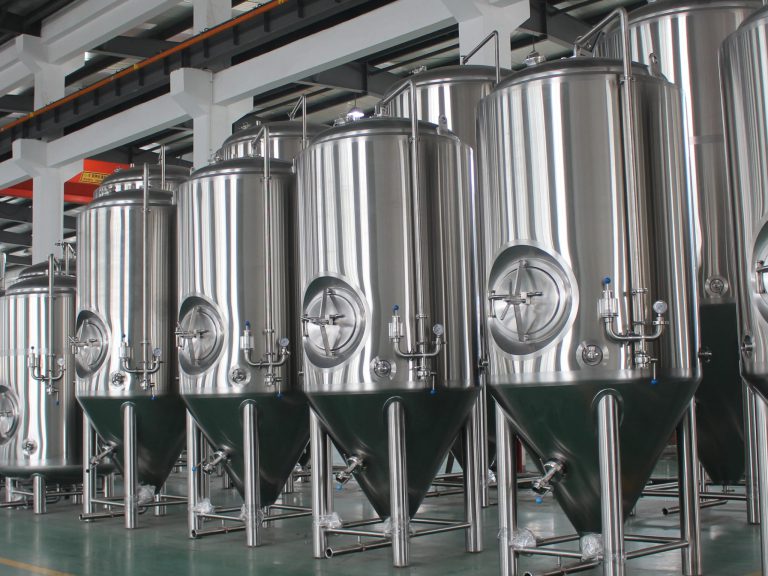Introduction

In the realm of craft brewing, the quest for exceptional beer is a journey that begins with meticulous selection of ingredients and culminates in the art of brewing. However, between these two stages lies a crucial element: the brewhouse equipment. The selection of the right brewhouse equipment can make or break a craft brewery, influencing the quality, consistency, and efficiency of beer production.
Anatomy of a Brewhouse
A modern brewhouse is a symphony of interconnected vessels, each playing a vital role in the brewing process. Let’s delve into the key components that form the heart of a craft brewery:
Mash Tun: The mash tun is where the magic begins. Here, crushed grains are mixed with hot water to extract sugars and starches, forming the wort, the foundation of the beer.
Lauter Tun: The lauter tun acts as a strainer, separating the wort from the spent grains (husks). This process, known as lautering, yields a clear, sugar-rich liquid ready for the boiling stage.
Brew Kettle: The brew kettle is where the wort takes center stage. Here, the wort is boiled, hops are added for bitterness and flavor, and the wort is concentrated into a sweet, syrupy liquid.
Whirlpool Tank: The whirlpool tank serves as a settling chamber, allowing hop particles and other debris to settle out of the wort before it enters the fermentation stage.
Fermentation Tanks: Fermentation tanks are the havens where yeast works its magic, transforming the wort into beer. These tanks provide a controlled environment for yeast to consume sugars, producing alcohol and carbon dioxide, the hallmarks of beer.
Brite Tank: The brite tank, also known as a conditioning tank, serves as a final polishing stage for the beer. Here, the beer is chilled, clarified, and carbonated to achieve the desired level of fizz and clarity.
Packaging Equipment: Packaging equipment, including bottling and canning lines, ensures the beer is safely and efficiently packaged into bottles, cans, or kegs for distribution and enjoyment.
Factors Influencing Equipment Selection

The selection of brewhouse equipment hinges on several critical factors:
Production Capacity: The size and capacity of the equipment must align with the brewery’s production goals and anticipated growth.The brewery should also consider factors such as the physical space available for the equipment, the energy requirements, and the maintenance and operating costs. It is essential to conduct thorough research and consult with industry experts to ensure that the equipment chosen will support the brewery’s long-term success. Additionally, investing in high-quality equipment from reputable manufacturers can help prevent downtime and ensure consistent product quality.
Beer Style: The type of beer a brewery intends to produce will influence the choice of equipment, such as the size of the mash tun and kettle. For example, a brewery focused on brewing small-batch craft beers might choose a smaller mash tun and kettle to fit their needs. Production needs. Conversely, breweries that specialize in large-scale beer production may invest in larger equipment to meet their operational needs.
Budgetary Constraints: The cost of equipment plays a significant role in decision-making, requiring careful consideration of budget limitations.
Space Availability: The brewery’s physical layout and available space dictate the size and configuration of the equipment.The equipment must be strategically placed to optimize workflow and efficiency, taking into consideration factors such as access to utilities, ventilation, and safety regulations.
Scalability: The equipment should be scalable to accommodate future growth and expansion of the brewery’s operations.The brewery should also consider investing in automation and digital monitoring systems to improve efficiency and productivity. Additionally, implementing sustainable practices and energy-saving technologies can help reduce operational costs and minimize environmental impact. It is important to carefully evaluate the long-term needs and goals of the brewery when selecting equipment to ensure that it can support continued growth and success.
Table: Common Brewhouse Equipment and Their Functions
| Equipment | Function |
|---|---|
| Mash Tun | Extract sugars and starches from grains to form wort |
| Lauter Tun | Separate wort from spent grains |
| Brew Kettle | Boil wort, add hops, and concentrate wort |
| Whirlpool Tank | Settle out hop particles and debris |
| Fermentation Tanks | Provide a controlled environment for yeast to ferment wort into beer |
| Brite Tank | Chill, clarify, and carbonate beer |
| Packaging Equipment | Fill and seal bottles, cans, or kegs with beer |
Conclusion
Selecting the right brewhouse equipment is a crucial decision for any craft brewery, influencing the quality, consistency, and efficiency of beer production. By carefully considering the factors mentioned above, brewers can make informed choices that align with their production goals, budget constraints, and space limitations. As the craft beer industry continues to thrive, the selection of the right equipment will remain a cornerstone of brewing excellence, enabling breweries to craft exceptional beers that delight and satisfy beer enthusiasts worldwide.
FAQ
Q: What are some additional considerations when selecting brewhouse equipment?
Beyond the primary factors mentioned, consider these additional aspects:
- Material Quality: Choose equipment made from high-quality materials that can withstand the rigors of brewing and ensure product integrity.
- Energy Efficiency: Opt for energy-efficient equipment to minimize operating costs and reduce environmental impact.
- Automation and Control Systems: Consider incorporating automation and control systems to enhance process consistency and reduce manual labor.
- Maintenance Requirements: Evaluate the ease of maintenance and availability of spare parts for the chosen equipment.
- Reputation of Equipment Manufacturers: Select equipment from reputable manufacturers known for quality, reliability, and after-sales support.
Q: What factors should I consider when determining the capacity of brewhouse equipment for my brewery?
Factors such as projected production volume, market demand, available space, and budget constraints should be taken into account when determining the capacity of brewhouse equipment for your brewery.
Q: How can I ensure the cleanliness and sanitation of brewhouse equipment?
Regular cleaning and sanitation protocols, including CIP (clean-in-place) procedures and sanitation cycles, should be implemented to maintain the cleanliness and hygiene of brewhouse equipment and prevent contamination.
Q: How much does brewhouse equipment cost?
The cost of brewhouse equipment can vary widely depending on the size, material, and level of automation. Smaller systems can start at a few thousand dollars, while larger, more automated systems can cost tens or even hundreds of thousands of dollars.

